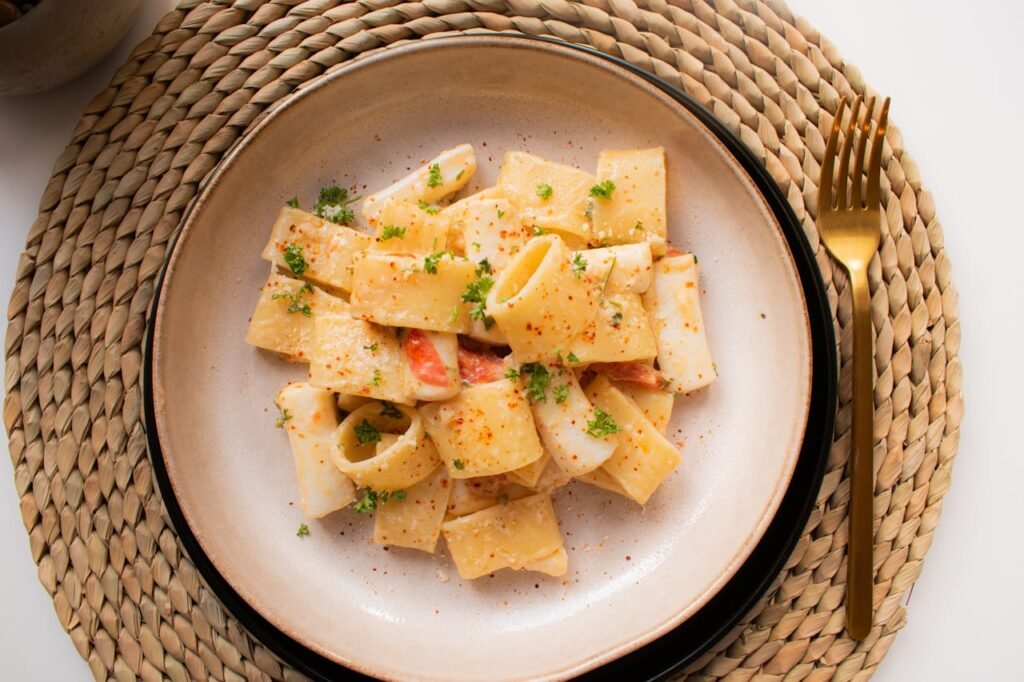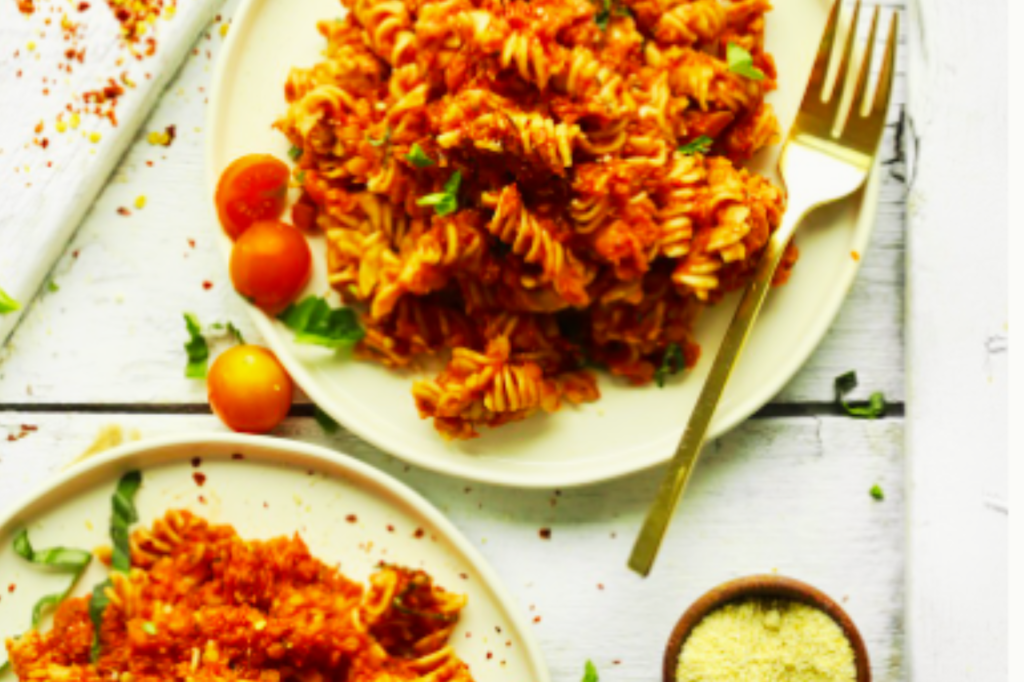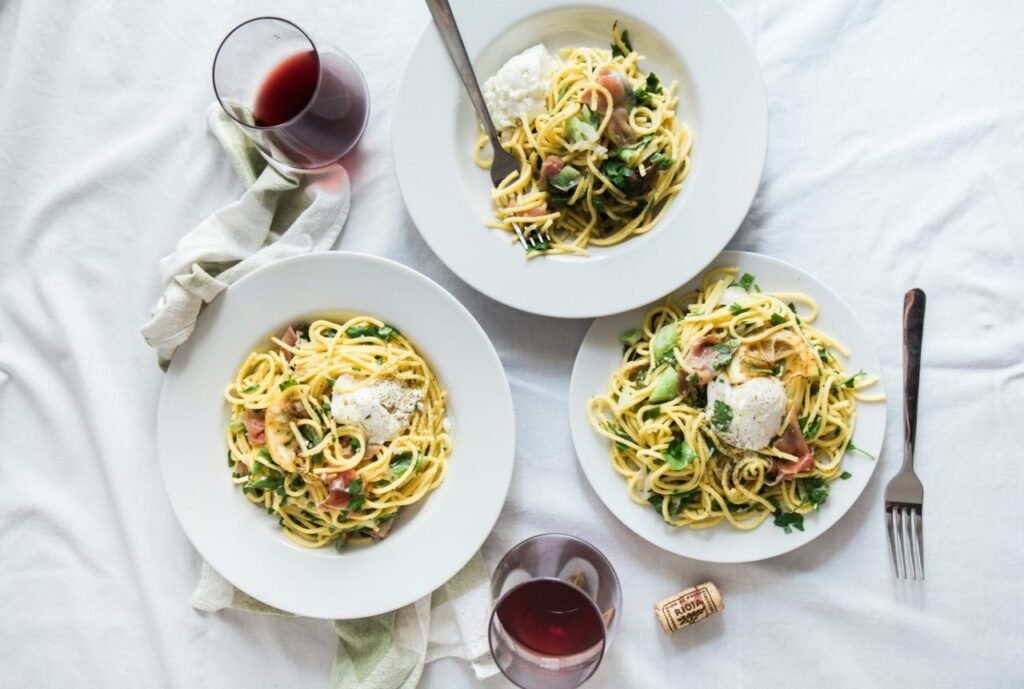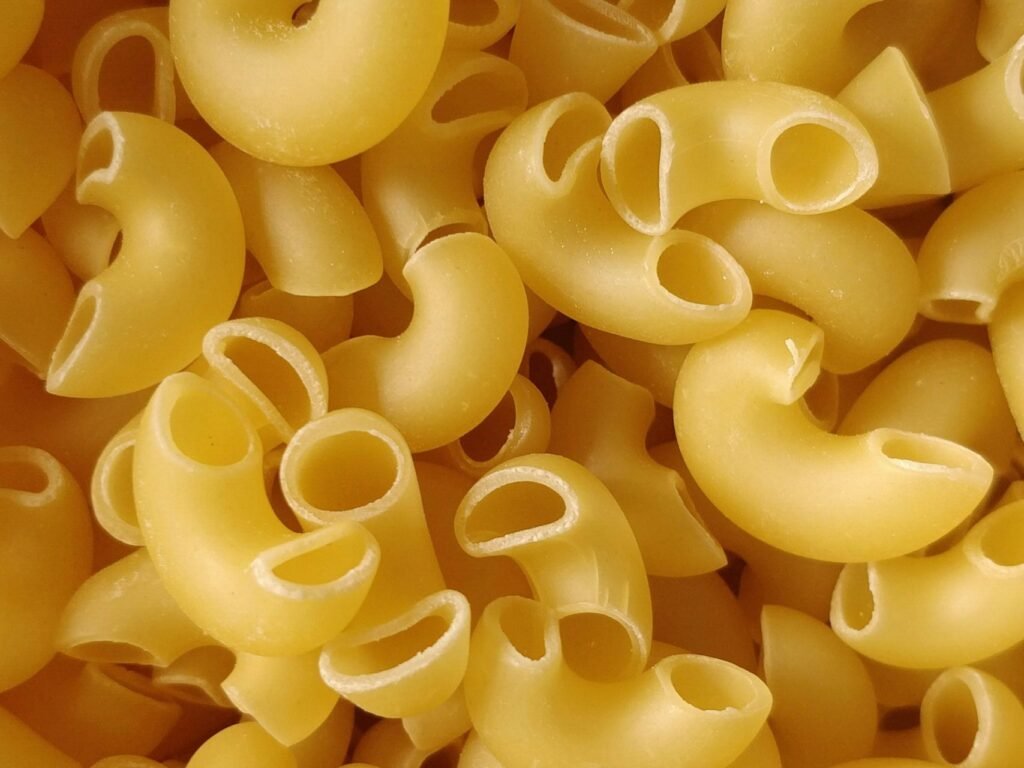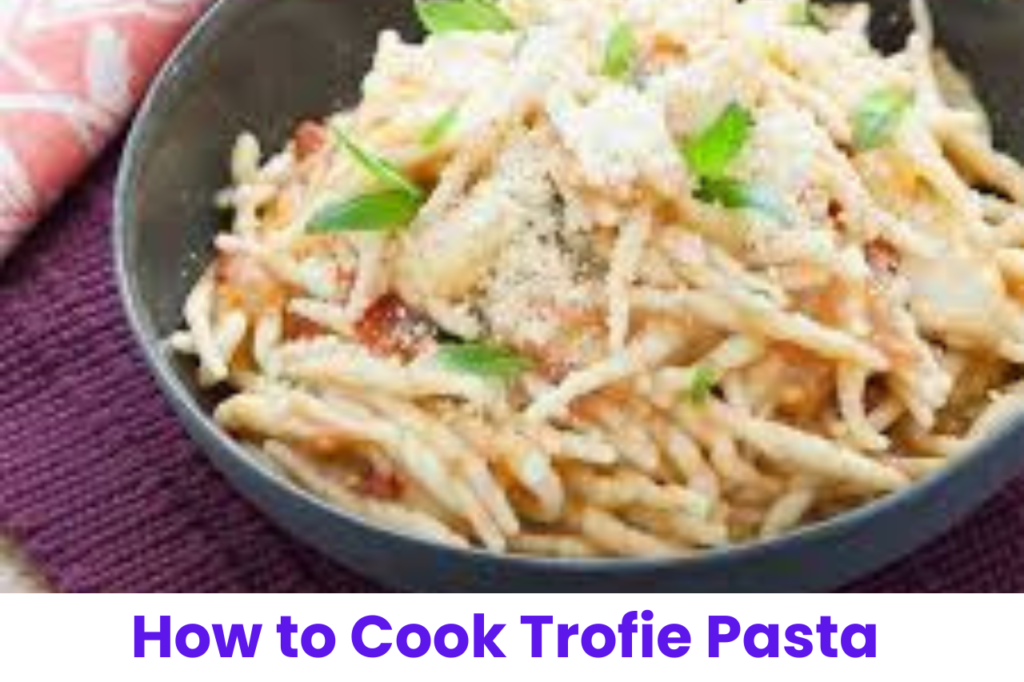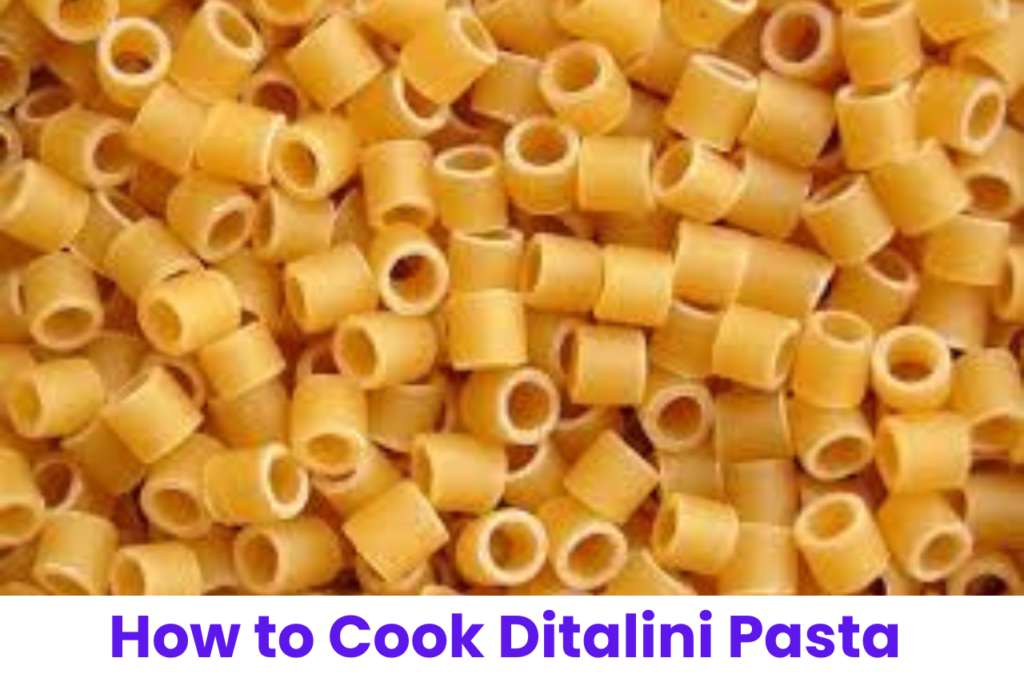Pappardelle pasta is a beloved Italian pasta variety characterized by its wide, flat ribbons that are perfect for capturing rich sauces. Cooking pappardelle to perfection requires an understanding of its unique characteristics and the right techniques to achieve the ideal texture. The cooking time plays a crucial role in ensuring that pappardelle is cooked al dente—firm to the bite yet tender. In this thorough aide, we’ll dive into the subtleties of how long to cook pappardelle pasta to accomplish the ideal outcome. In this guide I will guide you the process how to cook Pappardelle Pasta.
Pappardelle’s width and thickness distinguish it from other pasta shapes, making it an excellent choice for hearty sauces like ragu or creamy mushroom sauce. The wide surface area of pappardelle allows sauces to cling to it, delivering a burst of flavor in every bite. Whether you’re cooking fresh or dried pappardelle, understanding the nuances of cooking time is essential for a satisfying pasta dish.
Now, let’s explore the specifics of cooking fresh versus dried pappardelle pasta and how to determine when it’s perfectly al dente.
Tips for Cooking Perfect Pappardelle
Cooking pappardelle pasta to perfection involves attention to detail and a few helpful tips to ensure optimal results. Here are a few master ideas for cooking wonderful pappardelle:
Use Ample Water:
While cooking pappardelle or any pasta, guarantee you utilize an enormous pot with a lot of water. This allows the pasta to move freely while cooking and prevents sticking.
Generously Salt the Water:
Add a liberal measure of salt to the bubbling water prior to adding the pasta. This flavors the pasta from within and enhances its taste.
Monitor Cooking Time:
Fresh pappardelle cooks much quicker than dried pasta. Begin testing for doneness after about 1 minute of boiling. Taste the pasta frequently to achieve the desired texture.
Don’t Overcook:
Fresh pasta can become mushy if overcooked. Aim for a firm, chewy texture (al dente), where the pasta offers some resistance to the bite.
Avoid Cold Water Rinsing:
After draining the cooked pasta, avoid rinsing it with cold water. This washes away the starches that help sauce cling to the noodles.
Save Pasta Water:
Before draining the pasta, reserve a cup of the cooking water. This starchy liquid can be used to adjust the consistency of sauces when tossing with the cooked pasta.
Toss Immediately with Sauce:
Fresh pappardelle should be tossed with sauce immediately after draining. This ensures the pasta absorbs the flavors of the sauce and prevents sticking.
Consider Sauce Consistency:
When pairing with sauce, opt for sauces that complement the wide ribbons of pappardelle. Creamy sauces, meat ragù, and mushroom-based sauces work exceptionally well.
Serving and Enjoying Pappardelle
After cooking your pappardelle pasta to perfection, the next step is serving and enjoying this delicious dish. Here’s how to serve and savor your homemade pappardelle:
Plating the Pappardelle:
- Once the pappardelle is cooked and tossed in your desired sauce, it’s time to plate the dish.
- Use tongs or a pasta fork to twirl a portion of the sauced pappardelle into a nest-like shape on individual plates.
- Alternatively, you can transfer the entire sauced batch of pappardelle to a large serving dish for family-style dining.
Garnishing and Finishing Touches:
- Garnish the plated pappardelle with freshly grated Parmesan cheese, chopped parsley, or a drizzle of extra-virgin olive oil.
- These finishing touches add flavor, texture, and visual appeal to the dish.
Pairing with Accompaniments:
- Pappardelle pairs wonderfully with a variety of accompaniments. Serve with a side of crusty bread to mop up any remaining sauce.
- A simple green salad with a light vinaigrette can provide a refreshing contrast to the hearty pasta dish.
Beverage Recommendations:
- Consider pairing your pappardelle with a glass of red wine, such as Chianti or Sangiovese, which complements the rich flavors of the pasta.
- Alternatively, a sparkling water or lemonade can be a refreshing non-alcoholic option.
Savoring the Dish:
- Encourage your guests to savor each bite of the pappardelle, appreciating the flavors and textures.
- Pappardelle pasta is meant to be enjoyed slowly, allowing the combination of pasta and sauce to delight the palate.
Family and Social Dining:
- Pappardelle is ideal for sharing with family and friends. Its large ribbons encourage communal dining and conversation.
- Enjoy the process of dining together, celebrating good food and good company.
By following these serving and enjoyment tips, you’ll elevate your pappardelle pasta dish into a memorable dining experience. Experiment with different garnishes and accompaniments to customize the dish to your preferences.
Storing and Reheating Pappardelle
After enjoying your homemade pappardelle, you may have leftovers or want to prepare the pasta in advance. Here’s how to store and reheat pappardelle to maintain its flavor and texture:
Storing Cooked Pappardelle:
- Allow any leftover cooked pappardelle to cool to room temperature before storing.
- Place the cooled pasta in an airtight container or resealable plastic bag.
- Store in the refrigerator for up to 3-4 days.
Freezing Cooked Pappardelle:
- If you want to freeze cooked pappardelle, arrange the cooled pasta in a single layer on a baking sheet lined with parchment paper.
- Place the baking sheet in the freezer until the pasta is firm.
- Transfer the frozen pasta to a freezer-safe container or bag, removing excess air to prevent freezer burn.
- Label with the date and store in the freezer for up to 2-3 months.
Reheating Pappardelle:
- To reheat refrigerated pappardelle, bring a pot of salted water to a boil.
- Add the pasta to the boiling water and cook for 1-2 minutes or until heated through.
- Drain the pasta and toss with a little olive oil or sauce to prevent sticking.
Reheating Frozen Pappardelle:
- For frozen pappardelle, do not thaw before reheating.
- Drop the frozen pasta directly into boiling water and cook for 2-3 minutes or until heated through.
- Drain and toss with sauce or olive oil.
Avoiding Overcooking:
- When reheating pappardelle, be careful not to overcook the pasta, as it can become mushy.
- The goal is to heat the pasta just until it’s warmed through without altering its texture.
Using Leftover Pappardelle:
- Leftover pappardelle can be repurposed into other dishes, such as pasta salads, frittatas, or casseroles.
- The wide ribbons of pappardelle are versatile and can adapt well to various recipes.
By following these storage and reheating tips, you can enjoy your homemade pappardelle even after it’s been cooked. Properly stored pasta retains its flavor and texture, allowing you to savor it again at a later time.
Conclusion: How to Cook Pappardelle Pasta
Cooking pappardelle pasta is a delightful culinary experience that results in tender ribbons perfect for any meal. Whether you pair it with a rich ragu, creamy sauce, or simply dress it in olive oil and herbs, pappardelle adds elegance to your table. To accomplish the ideal surface, utilize a huge pot of salted bubbling water and cook the pasta until it’s still somewhat firm. Save some pasta cooking water to enhance your sauce and finish cooking the pasta in the sauce briefly to allow it to absorb flavors. Serve quickly with your number one sauce and embellishment, and go ahead and explore different avenues regarding various toppings to make special flavor mixes. With practice, you’ll master homemade pappardelle and enjoy the creative process of pasta-making.
Buon appetito!
Read More: How to Cook Pasta in Air Fryer
FAQs
Dried pappardelle pasta typically takes around 8 to 10 minutes to cook to al dente, depending on the brand and thickness of the pasta. Always refer to the package instructions for the most accurate cooking time.
Pappardelle pasta should be boiled in a large pot of salted boiling water. It generally takes about 8 to 10 minutes to cook until al dente. Stir occasionally during cooking to prevent sticking.
Use a large pot filled with approximately 4 to 6 quarts (about 16 to 24 cups) of water for cooking pappardelle pasta. Ensure there is enough water to fully submerge the pasta and allow it to move freely during cooking.
For Pastene pappardelle or any brand of pappardelle pasta, cook according to the package instructions or until al dente, which typically ranges from 8 to 10 minutes. Test the pasta for doneness by tasting it a minute or two before the recommended cooking time.


